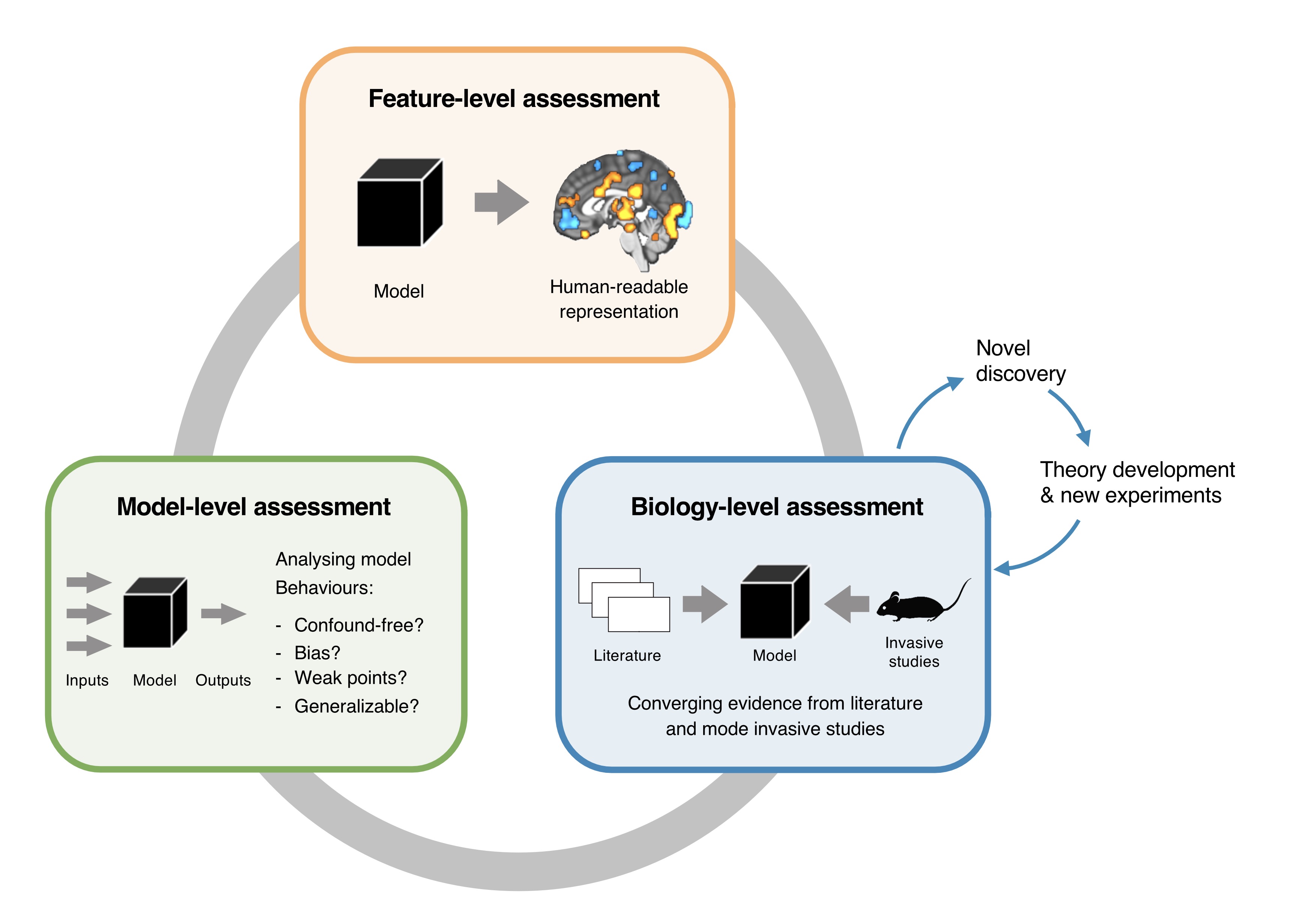Prof. Choong-Wan Woo’s Research Team at Dept. of Biomedical Engineering, Develops Explainable Neuroimaging Artificial Intelligence Model Analysis Pipeline
- Establishing a system for assessing thepossibility of explanation of artificial intelligence models
in the field ofneuroimaging
- Suggesting detailed analysis pipelinesthat researchers can easily follow

[Image 1] From left, Lada Kohoutová (first author, PhD student), Sungwoo Lee (co-author, Master student), Choong-Wan Woo (corresponding author)
The popularity of artificial intelligence and machine learning is increasing day by day. The brain cognitive science field is no exception, and recent studies using artificial intelligence and machine learning algorithms to diagnose diseases and predict treatment effects are gaining popularity. They even measure individual intelligence using neuroimaging. However, there is still doubt as to how reliable the decisions of the neuroimaging-based artificial intelligence model will be.
Artificial intelligence is often described as a black box with no visible interior. It is difficult to know exactly how and why an artificial intelligence model works. If it cannot be figured out, it is not possible to know when the artificial intelligence model will fail or when it will make biased decisions, nor does it help understand brain diseases and how the brain works. While the interpretation and explanation of these neuroimaging artificial intelligence models is very important, there had been no approach to comprehensively analyze and evaluate them.
To overcome these limitations, the research team led by Professor Choong-Wan Woo, Department of Biomedical Engineering, Center for Neuroscience Imaging Research, Institute for Basic Science, Sungkyunkwan University, developed a new integrated analysis pipeline to analyze and evaluate the explainability of neuroimaging artificial intelligence models and specific analysis protocols for researchers to follow easily.
This research was conducted jointly with the research team led by Prof. Taesup Moon, Department of Electrical and Computer Engineering, Sungkyunkwan University and another research team led by Prof. Tor D. Wager, Dartmouth College.
"As the use of machine learning and artificial intelligence using neuroimaging is becoming common in various fields, the need for interpretation and explanation of neuroimaging-based artificial intelligence models is growing," said Professor Choong-Wan Woo. He also said, "It is expected to help develop a descriptive and reliable neuroimaging artificial intelligence model in the future, and help us understand brain diseases and brain operating principles in the future."

[Image 2]
The analysis of the neuroimaging-based artificial intelligence model, known as the “black box”, was approached in three levels: model, predictor variable, and biology. This led to the development of a hierarchical and systematic new analysis system.
Lada Kohoutová, a PhD student in Department of Biomedical Engineering and the first author of the study said, “The interpretation of neuroimaging-based artificial intelligence models is actually a very complex and poorly established field of research. I hope this research will serve as the basis for the interpretation of systematic neuroimaging artificial intelligence models in the future.”.
This work was supported by IBS-R015-D1 (Institute for Basic Science, Korea), 2019R1C1C1004512 (National Research Foundation of Korea) and 18-BR-03, 2019-0-01367-BabyMind (Ministry of Science and ICT, Korea).
The study was published in the global journal Nature Protocols on March 18th in Nature Protocols (IF 11.334).
※ For more information on the thesis, refer to the author's YouTube video abstract.
https://youtu.be/kcDfEkoQa7Y
